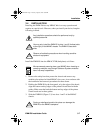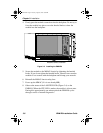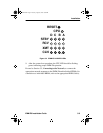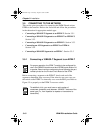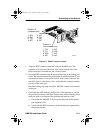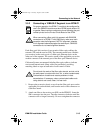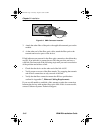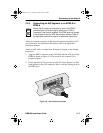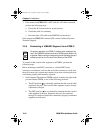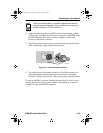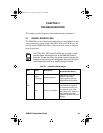
Connecting to the Network
EMM-E6 Installation Guide 3-15
3.5.3 Connecting a 10BASE-F Segment to an EPIM-F1
Each fiber optic link consists of two strands of fiber optic cabling: the
transmit (TX) and the receive (RX). The transmit strand from a module
port connects to the receive port of a fiber optic Ethernet device at the
other end of the segment. The receive strand of the applicable port on the
module connects to the transmit port of the fiber optic Ethernet device.
Cabletron Systems recommends labeling fiber optic cables to indicate
receive and transmit ends. Many cables are prelabeled, providing
matching labels or tapes at both ends of each strand of cable.
1. Remove the protective plastic covers from the fiber optic ports on the
applicable port on the module, and from the ends of the connectors on
each fiber strand.
2. Attach one fiber to the receive port (RX) on the EPIM-F1. Insert the
SMA connector into the port. Turn the connector clockwise until the
connector will no longer turn easily. Do not overtighten the connector.
NOTE
For proper operation, the EPIM-F1 module to be configured for
use in the EMM-E6 module must be of EPIM board revision 05
or greater. Board revision numbers are found following the part
number printed on the Printed Circuit Board of the EPIM.
!
CAUTION
When connecting a fiber optic link segment with SMA 906
connectors to an EPIM-F1 with SMA ports, make sure each
connector uses half alignment, NOT full alignment, sleeves.
A full alignment sleeve damages the receive port. SMA 905
connectors do not need alignment sleeves.
!
CAUTION
Do not touch the ends of the fiber optic strands, and do not let
the ends come in contact with dust, dirt, or other contaminants.
Contamination of cable ends causes problems in data
transmissions. If necessary, clean contaminated cable ends
using alcohol and a soft, clean, lint-free cloth.
ICH1Book Page 15 Tuesday, August 6, 1996 3:06 PM



